How to make an expensive-looking Christmas wreath for free – by foraging for materials
Hanging a Christmas wreath on the front door is the perfect way to start the Christmas celebration, but it's an expense we could all do without.
Under the guidance of an expert gardener, we discover how to create the perfect Advent decoration for free by foraging in the garden and hedgerows.
If you follow her tips, you will not only save money, but you can also gain fun new skills.
Wreath Magic: Toby Walne got expert tips for making a free wreath from gardener Geraldine Shaw
Foraging for decoration
An invigorating walk in the countryside at this time of year offers an ideal way to clear the mind before Christmas – but for gardener Geraldine Shaw it also provides an opportunity to prepare for the festive season ahead.
So why I like to stroll blindly down the street, the Royal Horticultural Society expert is looking for a wealth of decorations to create a Christmas wreath.
Geraldine says: 'You don't have to spend a fortune on a nice Christmas wreath from the shops, where you can spend £50 or more.
'Instead, my suggestion is to get out into the garden and local countryside and appreciate the nature around you, where the materials cost you nothing.'
She adds, “A little homework beforehand can help you identify plants you might want to put in a wreath, but being open to what you'll find is also part of the fun.” Also take a large bag and sturdy pruning shears with you.'
Within a few feet she stops – and points to a fluffy mess near our feet. 'This is a clematis, also called traveler's joy.
'The twine makes a great wreath base. You can also use cedar, willow, dogwood, poplar or birch.'
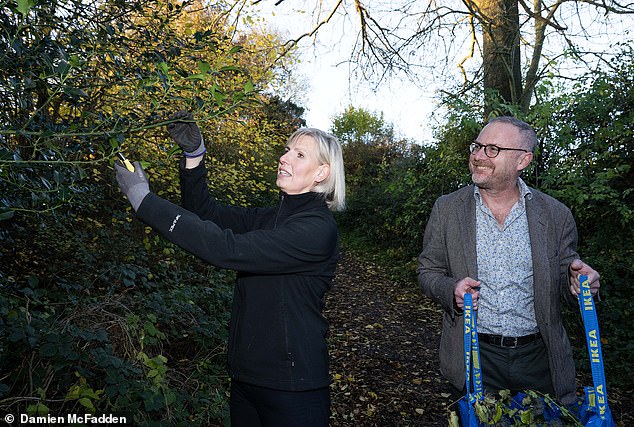
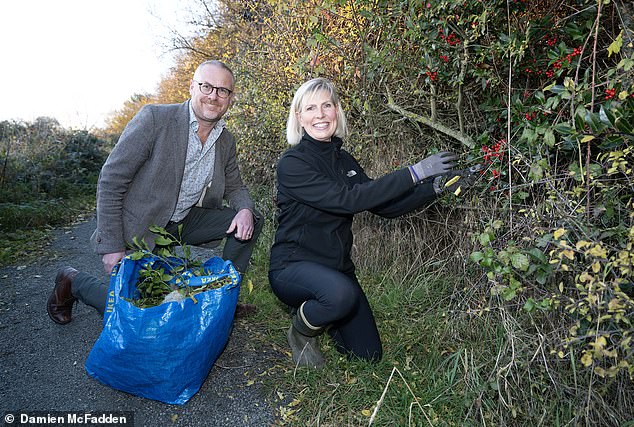
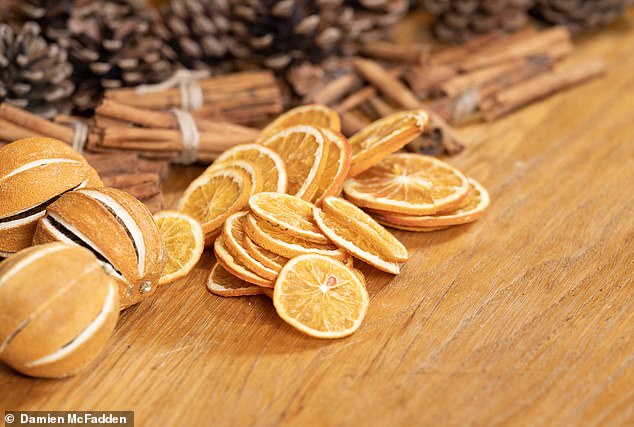
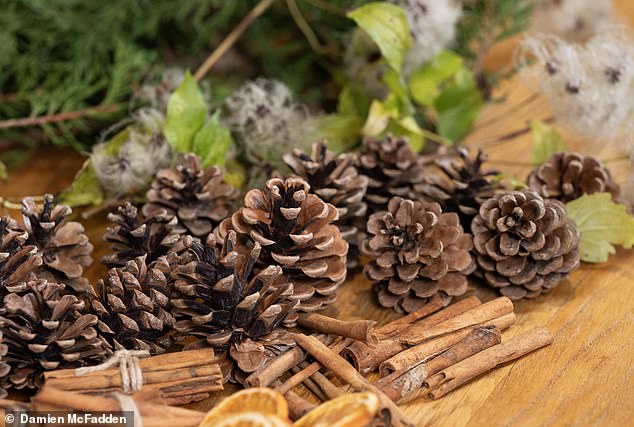
Foraging: With a little homework beforehand, you can identify plants you might want to put in a wreath
It isn't until she pulls a thin, three-foot strip of clematis from the hedge that I finally appreciate the delicate yet hardy nature of this strangely beautiful plant.
Next we encounter English ivy with its lush green leaves and clumps of brown-tinged closed buds that have just finished blooming.
Despite the ivy hanging all around us, Geraldine makes sure to only cut off about half a meter to ensure the plant remains vigorous and healthy. Finally, she points to a red cluster of red berries high above our heads, indicating that we have found the all-important sprigs of holly.
'Red and green are complementary colors – the opposites on an artist's color wheel. When you add the combination together, you get that special Christmas visual appearance.'
I worry that taking bunches of holly berries might make the local birds hungry.
But Geraldine assures me that despite being a favorite snack of blackbirds, thrushes and robins, there is still plenty for us all, as long as we take what we need and don't get greedy.
You can find other ingredients for the wreath in my garden. Cutting branches from cypress trees not only gives body to the decoration, but also prunes the hedge at the same time.
And by raking my unkempt, overgrown lawn the old-fashioned way, we can collect a bucket of moss.
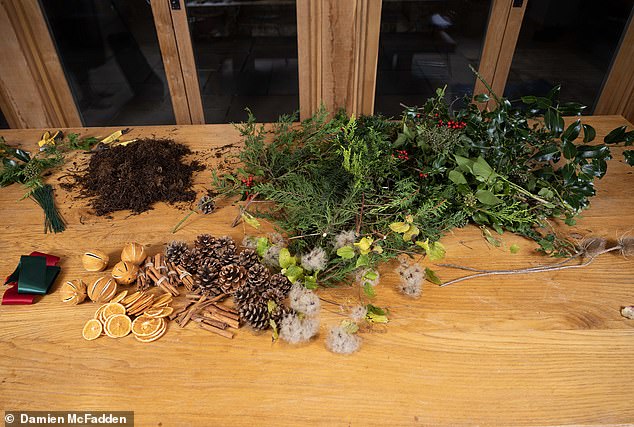
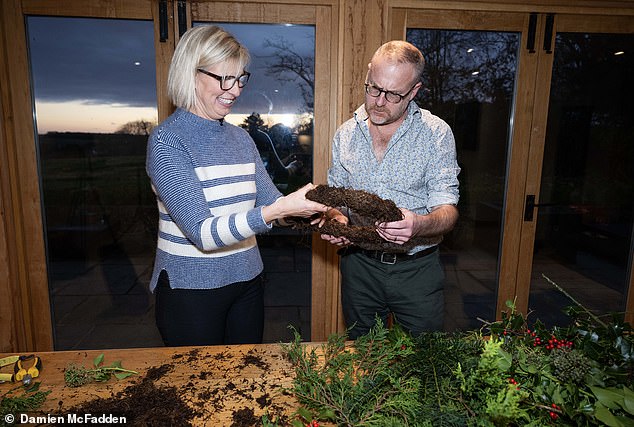
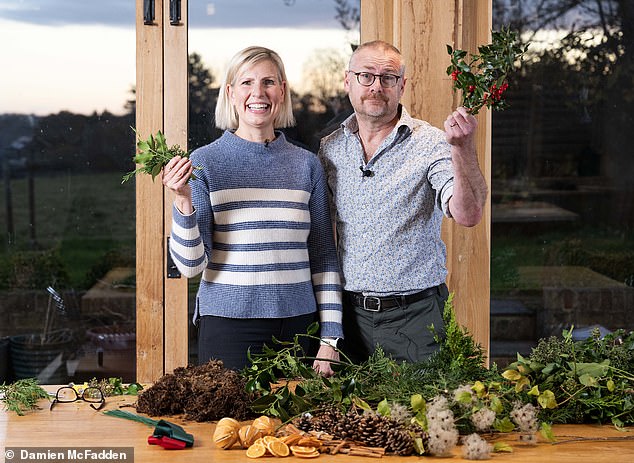
Christmas atmosphere: Cutting branches from cypresses not only gives body to the decoration, but also prunes the hedge at the same time
Building the wreath
Essential ingredients, including moss, cypress, holly and ivy, lie on the kitchen table.
We also have dried orange – slices that have been baked in the oven for an hour at 120 degrees Celsius – plus a handful of cinnamon sticks (from the kitchen cupboard), pine cones previously picked from a forest floor and a £2 spool of florist's twine.
But what is this?
The gardener sheepishly picks up a 12-inch round double-loop frame that looks suspiciously like a store-bought one rather than something you'd find in the countryside.
Geraldine says: 'Cheating, I know, but these wreath frames only cost £1.
“You can justify it because they last year after year – unlike naturally made hoops that can decay over time.”
It means we have to put the clematis aside, but also that we can complete the wreath in one hour instead of two.
If I'd had the patience, I could have made a metal wreath frame from a coat hanger for free instead if I sculpted it with pliers.
The first job is to push the damp clumps of moss between and around the two tracks of wire hoops – I push generous handfuls into the area over an inch thick, I move slowly around the perimeter – holding the moss in place by zigzagging saw wire about the flexible plant.
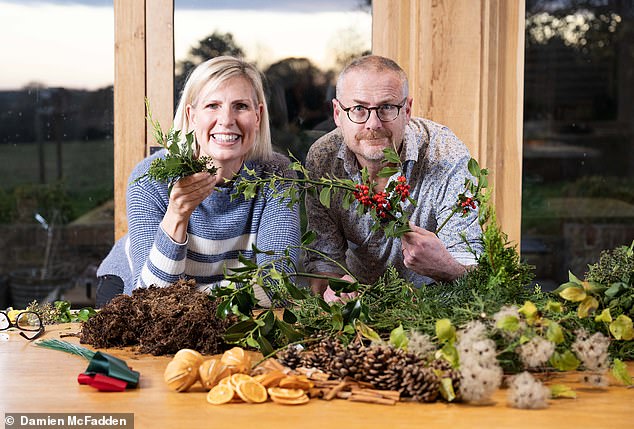
The finished wreath should easily last a month hung on an exterior door with a damp moss base, says Geraldine
Geraldine says: 'The finished wreath can easily last a month if hung on an outside door with a damp moss base – but if you're concerned about it drying out, mist it with water occasionally.
'This should keep the foliage looking lush well past Christmas and into the new year.'
Then I'm told to 'corse': make six-inch bouquets of cypress, ivy and holly, tightly wrapped together.
The finished wreath can easily last a month if hung on an outside door with a damp moss base – but if you're concerned about it drying out, mist it with water occasionally.
Each corsage is wrapped horizontally in place along the moss-filled hoop, allowing the sprigs to overlap outward.
I slowly rotate the wreath while pinning a total of fifteen corsages around the perimeter, until the entire surface is covered in greenery with a hint of rich red berries.
Geraldine suggests continuing and finalizing this 'rule of three' – a visually appealing odd number formula used by florists.
She picks up a cone and wraps the binding wire tightly around the base before curling two strands at either end into an inch-long prong – which is then pushed into the moss.
I follow her lead and three cones are placed evenly spaced around the wreath.
The exercise is repeated with three orange slices tied together with thread and pushed into the base – in three separate bunches – and again with three bunches of three cinnamon sticks wrapped with string. And voila!
This satisfying task is the perfect way to get into a festive mood.
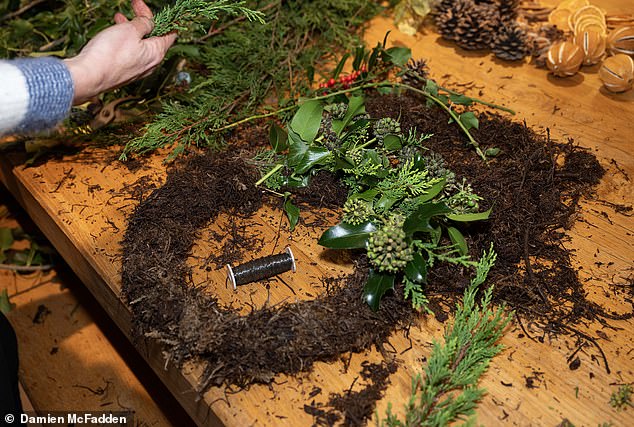
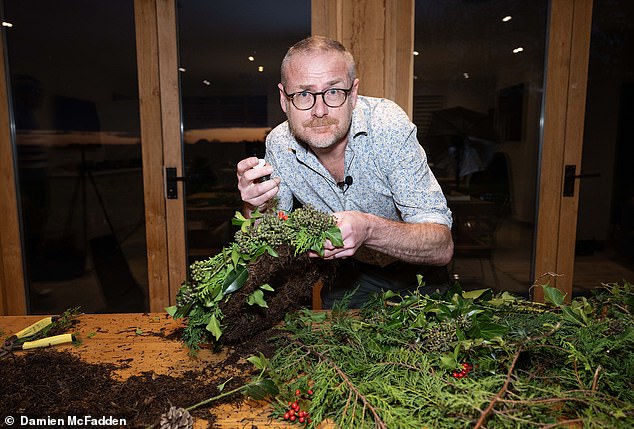
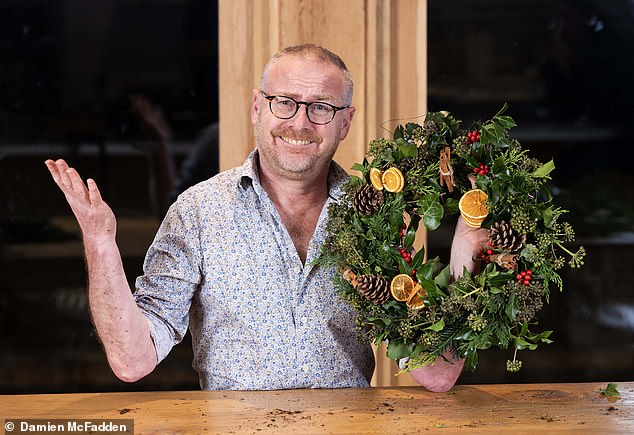
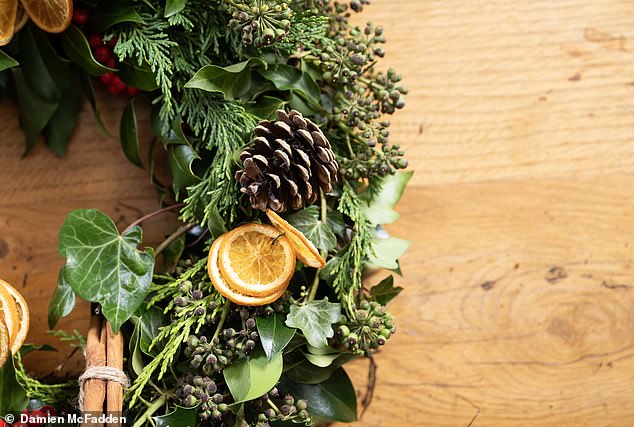
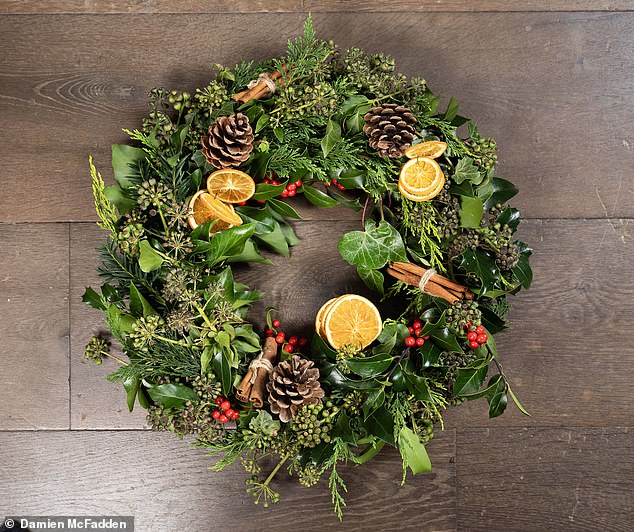
Finished wreath: Made for a few pounds but a lot of love by Toby and Geraldine
Imagination is free
Although you can spend a small fortune buying a ready-made Christmas wreath, doing it yourself not only saves money but also provides the opportunity to be creative.
Geraldine says: 'We went for natural green, but you may want to add a blue tint too.
For this I suggest using eucalyptus, blue conifer or hydrangea. Some also like to add glitter, a spray of gold or silver paint, but for me this is an unnecessary, unnatural frill.'
Other leaves that can look great in a wreath – often found in the garden or on a walk in the countryside – include aromatic herbs such as rosemary and laurel, as well as lavender, pittosporum and mistletoe.
Dried flowers can add a pop of festive color – with pink heather, rose, dahlia, statice and even thistle.
But they need to be hardened beforehand, with a few weeks in a drying cabinet.
Other decorative dried fruits to consider include lime, grapefruit and apple.
Finally, why not finish your wreath with a bow? Consider using the ribbon from previous Christmas gifts.
Some links in this article may be affiliate links. If you click on it, we may earn a small commission. That helps us fund This Is Money and keep it free to use. We do not write articles to promote products. We do not allow a commercial relationship to compromise our editorial independence.

